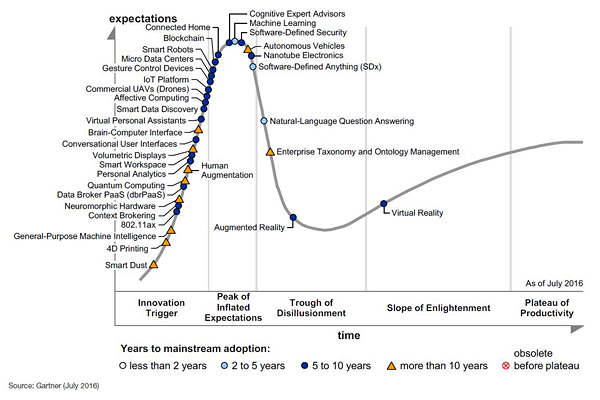- Linear Algebra
- Statistics
- Programming (R/Python/Scala)
- Visualization (ggplot2, D3.js, Tableau)
- Feature Selection
- Hypothesis testing
- Machine learning (Regression, Classification, Recommender Systems, Clustering, Deep learning)
- Reproducible documentation
- Big data (MapReduce, hadoop, Spark, Mesos/Yarn, ...)
Introduction to Data Science
Ahsan Ijaz
Topics
Data Science Demand (LinkedIn Top skills)
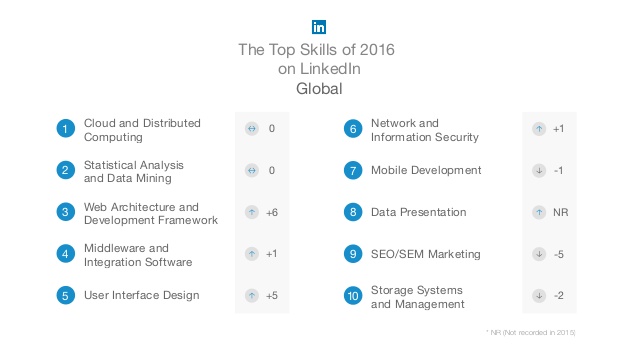
Data Science Demand (Gartner 2013)
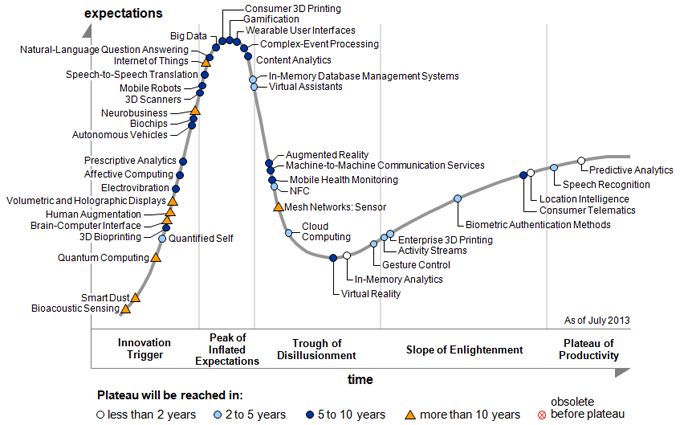
Data Science Demand (Gartner 2014)
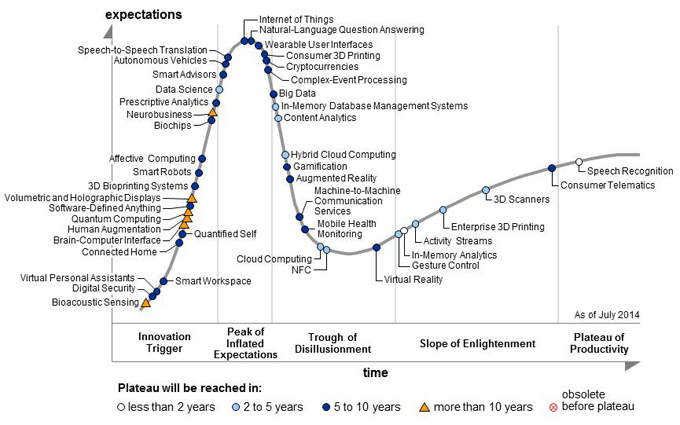
Data Science Demand (Gartner 2015)
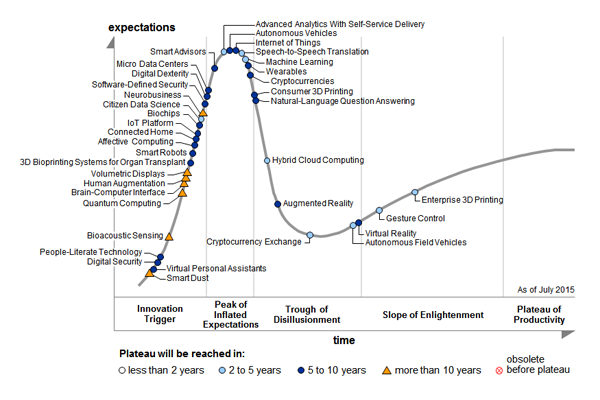
Data Science Demand (Gartner 2016)
General Skill set

http://blogs.gartner.com/christi-eubanks/three-lessons-crossfit-taught-data-science1
Type of Data Scientists

http://blog.udacity.com/2014/11/data-science-job-skills.html
Roadmap to Data Science
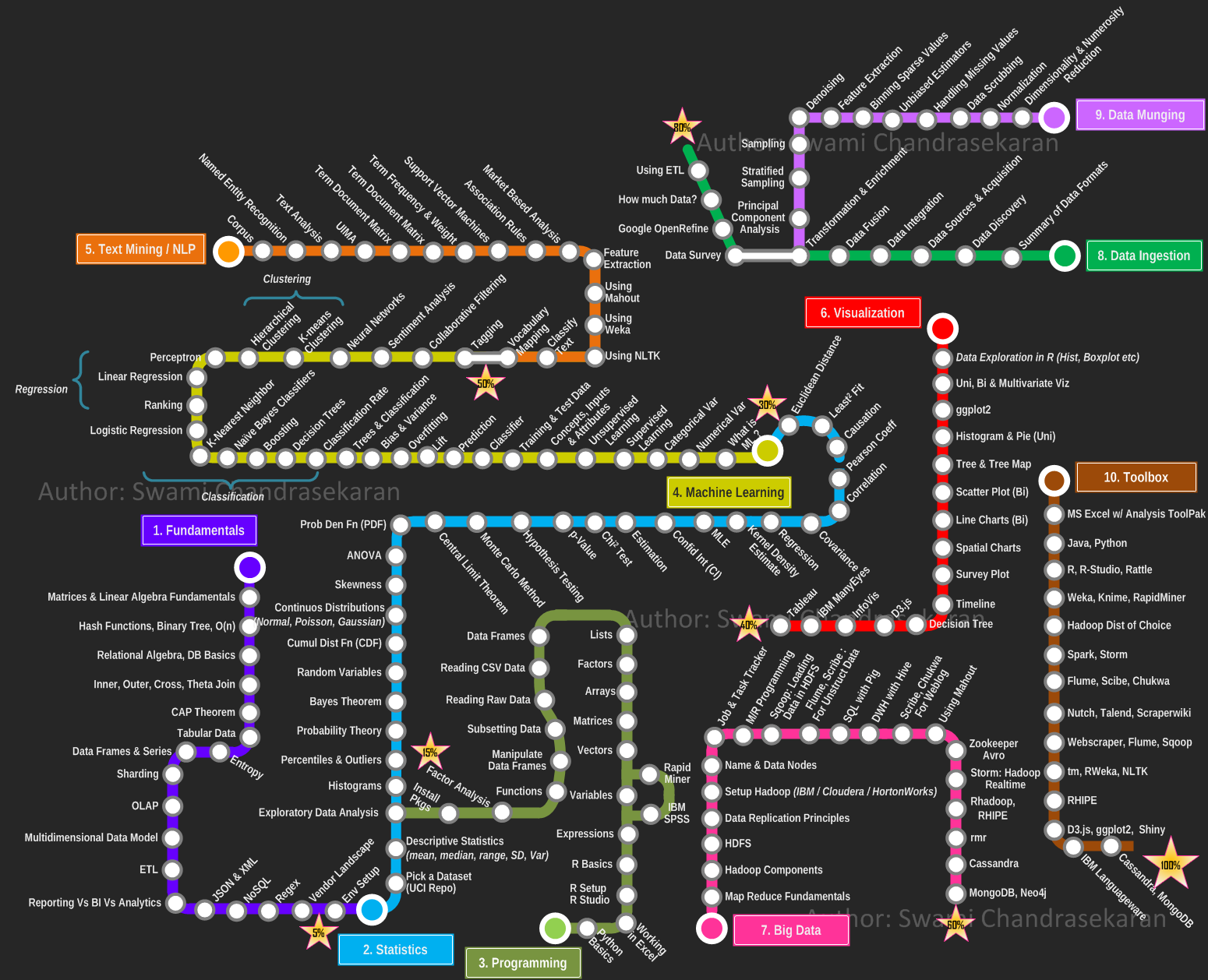
ref: http://nirvacana.com/thoughts/becoming-a-data-scientist/
Data Science ToolBox
- R programming language
- Python Language
- R Markdown, Knitr, Slidify, Shiny
- IPython notebooks
Jeff HammerBach's Model for Data problems
- Identify problem
- Instrument data sources
- Collect data
- Prepare data (integrate, transform, clean, filter, aggregate)
- Build model
- Evaluate model
- Communicate results
Our first Data science project!
SPAM Example
Start with a general question
Can I automatically detect emails that are SPAM that are not?
Make it concrete
Can I use quantitative characteristics of the emails to classify them as SPAM/HAM?
SPAM Example

SPAM Example
Dear Sir,
Can you send me your address so I can send you the invitation?
Thanks,
Ahsan
SPAM Example
Dear Sir,
Can send me your address so I can send the invitation?
Thanks,
Ahsan
Frequency of you \(= 2/17 = 0.118\)
SPAM Example
library(kernlab)
data(spam)
head(spam,3)
make address all num3d our over remove internet order mail receive will people report addresses
1 0.00 0.64 0.64 0 0.32 0.00 0.00 0.00 0.00 0.00 0.00 0.64 0.00 0.00 0.00
2 0.21 0.28 0.50 0 0.14 0.28 0.21 0.07 0.00 0.94 0.21 0.79 0.65 0.21 0.14
3 0.06 0.00 0.71 0 1.23 0.19 0.19 0.12 0.64 0.25 0.38 0.45 0.12 0.00 1.75
free business email you credit your font num000 money hp hpl george num650 lab labs telnet
1 0.32 0.00 1.29 1.93 0.00 0.96 0 0.00 0.00 0 0 0 0 0 0 0
2 0.14 0.07 0.28 3.47 0.00 1.59 0 0.43 0.43 0 0 0 0 0 0 0
3 0.06 0.06 1.03 1.36 0.32 0.51 0 1.16 0.06 0 0 0 0 0 0 0
num857 data num415 num85 technology num1999 parts pm direct cs meeting original project re edu
1 0 0 0 0 0 0.00 0 0 0.00 0 0 0.00 0 0.00 0.00
2 0 0 0 0 0 0.07 0 0 0.00 0 0 0.00 0 0.00 0.00
3 0 0 0 0 0 0.00 0 0 0.06 0 0 0.12 0 0.06 0.06
table conference charSemicolon charRoundbracket charSquarebracket charExclamation charDollar
1 0 0 0.00 0.000 0 0.778 0.000
2 0 0 0.00 0.132 0 0.372 0.180
3 0 0 0.01 0.143 0 0.276 0.184
charHash capitalAve capitalLong capitalTotal type
1 0.000 3.756 61 278 spam
2 0.048 5.114 101 1028 spam
3 0.010 9.821 485 2259 spam
SPAM Example
plot(density(spam$our[spam$type=="nonspam"]),
col="blue",main="",xlab="Frequency of 'your'")
lines(density(spam$our[spam$type=="spam"]),col="red")

SPAM Example
Our algorithm
- Find a value \(C\).
- frequency of 'your' \(>\) C predict "spam"
SPAM Example
plot(density(spam$your[spam$type=="nonspam"]),
col="blue",main="",xlab="Frequency of 'your'")
lines(density(spam$your[spam$type=="spam"]),col="red")
abline(v=0.5,col="black")

SPAM Example
prediction <- ifelse(spam$your > 0.5,"spam","nonspam")
table(prediction,spam$type)
prediction nonspam spam
nonspam 2112 468
spam 676 1345
Accuracy$ \approx 0.459 + 0.292 = 0.751$
Applications of Machine Learning
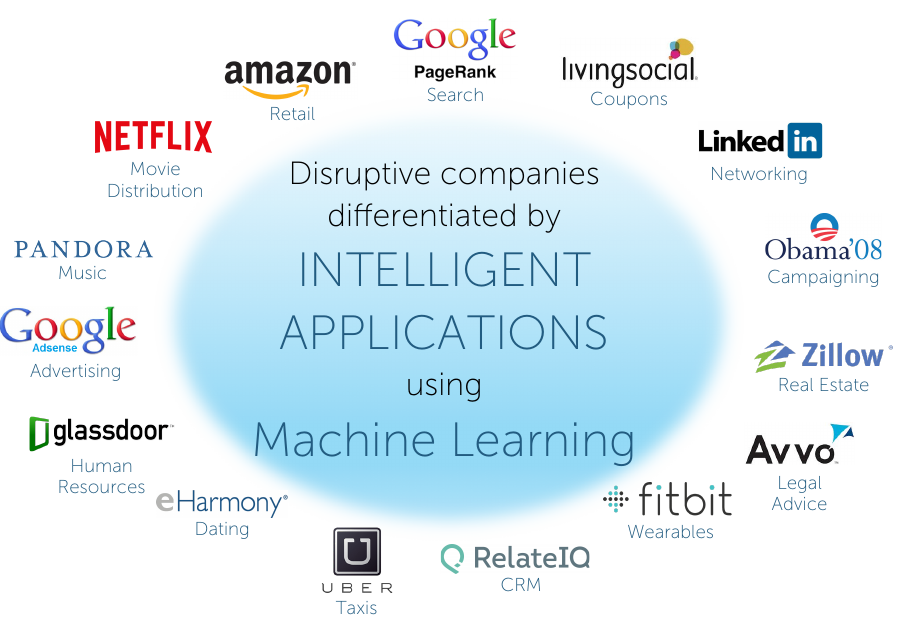
Case Studies
Case Study 1, Regression:
Prediction of House prices

Case Study 2, Classification:
Sentiment Analysis
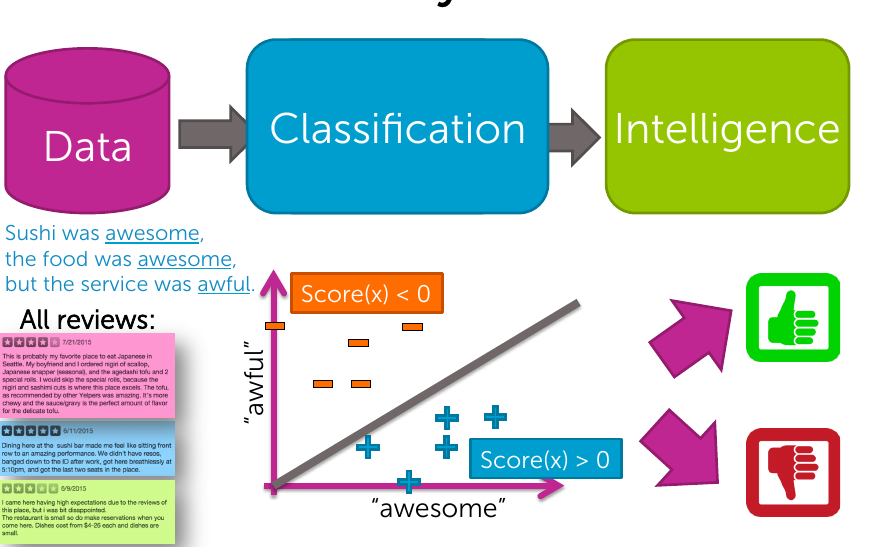
Case Study 3, Clustering :
Document Retrieval
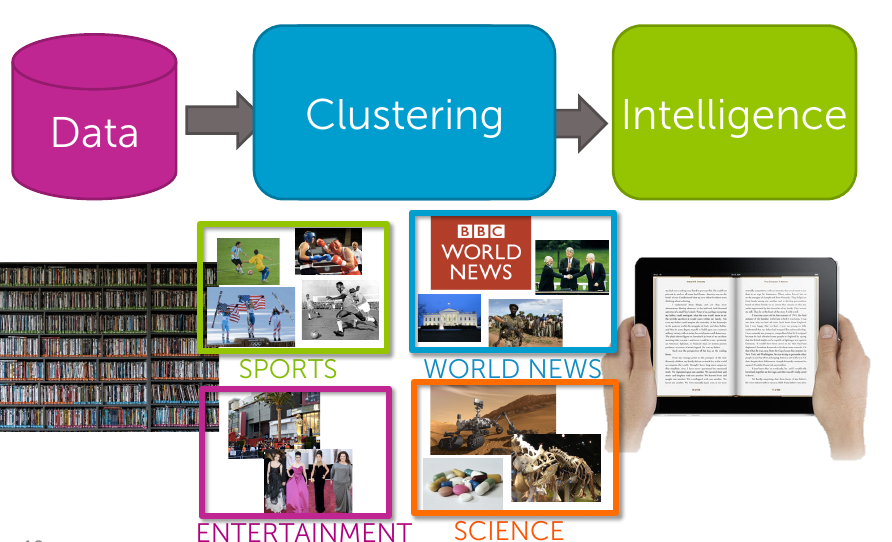
Case Study 4, Recommender System (Matrix factorization):
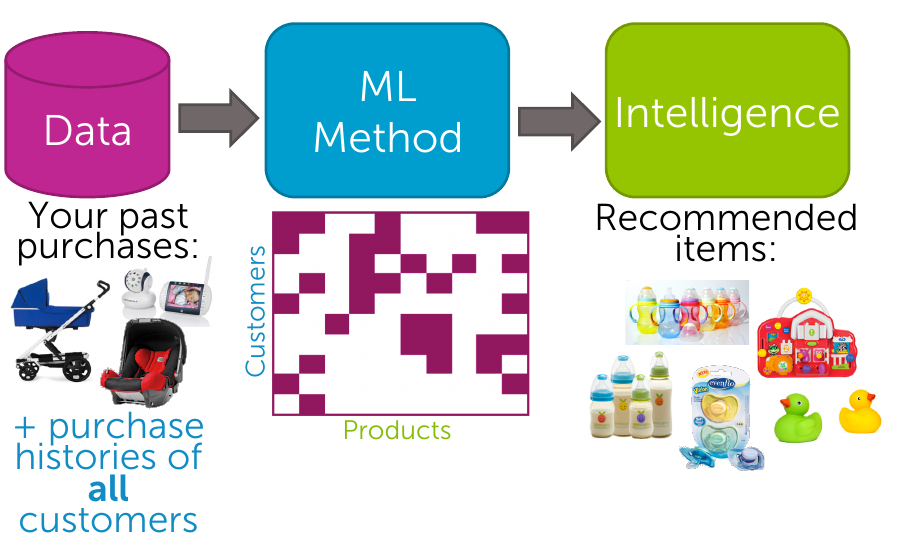
Case Study 5, Deep learning:
Visual recommender system.
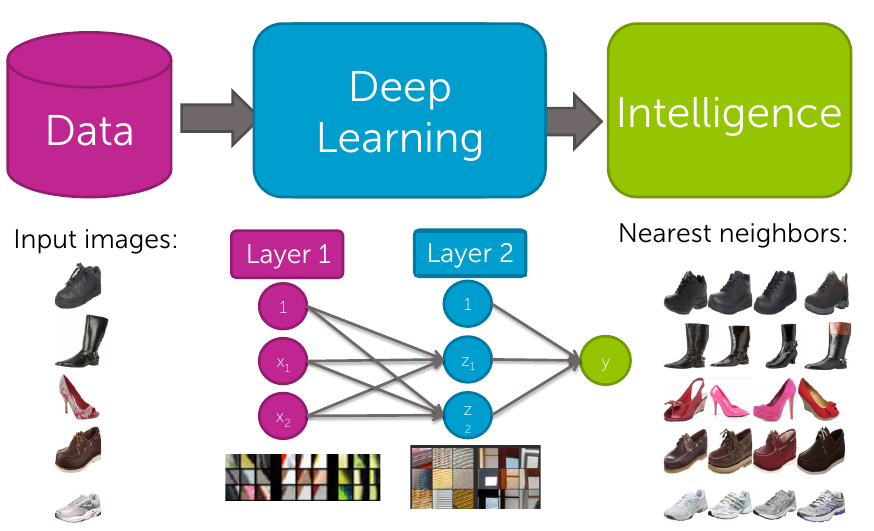
Regression techniques
- Linear Regression
- Multiple linear Regression
- Polynomial Regression
- Ridge Regression
- Lasso Regression
- Local/Kernel Regression
Classification methods
- Linear Classifier
- Logistic Regression
- Decision Trees
- Bagging
- Boosting
- Discussion about scaling of algorithms
Feature Selection
- Subset selection
- Greedy passes
- Basis selection
- Bias variance trade-off
Document retrieval and Clustering
- Nearest Neighbor
- K-means clustering
- DB-scan
- Hierarchical Clustering
- Latent Dirichlet allocation
Recommender System
- Collaborative Filtering
- SVD and PCA
- Matrix factorization
Deep learning
- Examples of cross-learning
- Using deep features for image, text matching
Hypothesis Testing
- t-distributions
- A/B testing scenarios
- Real world examples
Reproducible Documents
- R Markdown example, embedding code and text
- IPython
Big Data Paradigm
- MapReduce
- Hadoop
- Spark
- Mesos/Yarn
- Sql to NoSql Databases
